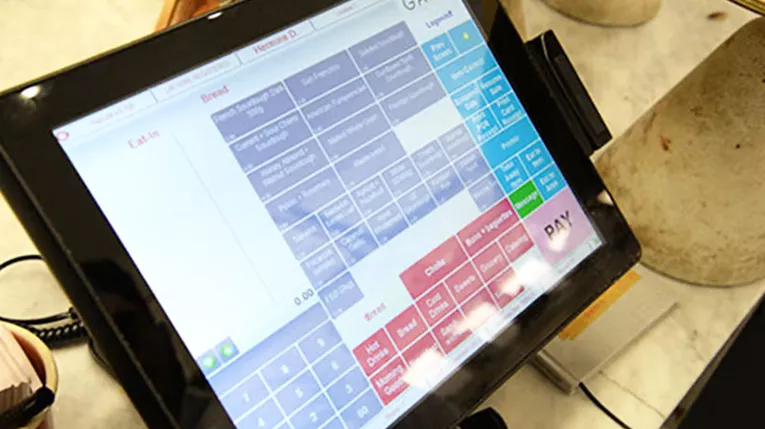The difference between sourcing and procurement – Explained
Here we are going to discuss the main differences between sourcing and procurement. We will also discuss other areas such as procurement processes, sourcing and procurement teams, procurement activities, strategic sourcing, purchase requisition, supply chain management, and much more.
It is important to understand the difference between sourcing processes and procurement processes. Both affect the supply chain, and both are very closely related, but to get the most out of them, it’s important to understand the differences.
What is sourcing?
Sourcing is the process of choosing suppliers to provide the relevant goods and services you require to run your business. It involves making supply chain management decisions with the goal of creating a competitive advantage. Sourcing is a subset of the procurement process.
The idea of sourcing may sound simple but executing a good sourcing strategy can be a complicated process. The purpose of sourcing is to ensure healthy supply chain management, which is key to long-term business success.
An example of sourcing is a clothing brand that has the design for their clothing items created, with logos on them. They now must source the correct manufacturer who can consistently make the clothing items of good quality, isn’t too expensive, maintains a high level of communication, and meets delivery deadlines. The process of choosing the supplier who meets these criteria is sourcing.
Why is sourcing important?
Sourcing is very important to your organisation’s operations because if you don’t choose the right suppliers, you will have major supply chain risks. When sourcing suppliers, you shouldn’t decide solely on cost.
It is important to get to know the suppliers so you can be sure they will deliver the expected results. Ideally, they will all be reliable suppliers. Having trust in your suppliers is a major part of supplier relationships.
Sourcing is also important as doing it correctly and successfully will make managing suppliers much easier. If there is a high level of supplier performance across all your different suppliers, then you know that your strategic sourcing has been a success.
Example of sourcing in business operations
Sourcing includes carrying out market research, creating and implementing strategy, identifying quality and quantity metrics, and choosing relevant suppliers to meet these requirements.
For example, a hotel in the hospitality industry must source many different goods and services from different suppliers. They must source food and beverage for the restaurant and bar, sheets, towels, toiletries, cleaning products, staff uniforms, and much more. For the more frequent suppliers, particularly the food and beverage suppliers, it’s vital that the hotel has a good supplier relationship with each of them.
If the raw materials being delivered are consistently late, or incorrect, it can negatively affect the menus and dishes that are being served to customers on a daily basis. This is an example of a weak supplier performance, which will have long term effects on the supply chain if something is not done to resolve these issues.
The sourcing process
The sourcing process includes every aspect that relates to choosing the appropriate supplier that offers your business the best value. This process includes identifying and engaging with potential suppliers, as well as assessing these potential suppliers and choosing the one that is the best fit for your business. By the end of the sourcing process, you should end up with a supplier capable of meeting all your requirements and needs.
Identifying your customer needs
Put yourself in the shoes of your customer to understand what they need. Usually, it relates to a combination of all of the following: value, urgency, and quality. The sourcing team must make sure they get the correct goods and services on time, to produce the products and/or services for their own customers.
Market assessment
Assessing potential suppliers means reaching out to various ones, getting quotes from each of them, and discussing with each supplier what a potential partnership would look like over the long term.
These discussions with suppliers help you narrow down the supplier market. The request for a quote is to gain insights into the prices and more information on their offerings.
Negotiation process
After you have identified a shortlist of suppliers, you can select the top choices for the negotiation process. This is the point in the negotiation process where you meet with suppliers to see what they can offer you to receive your business. Negotiating is the main way to get lower prices, benefits, and more.
What is procurement?
Procurement is the group of tasks involved with buying goods and services. It can be described as the process of acquiring goods and services for your business. The procurement process is made up of everything from identifying what’s needed, sourcing, selecting, negotiating, ordering, receiving, and paying.
The term procurement refers to the act of obtaining goods and services. It is typically referred to in business because companies need to obtain goods or services on a much larger scale than individuals.
The procurement process
The procurement process includes all the activities that happen before, after, and during the purchase of goods and services. There is much more to the procurement process than picking up the phone and ordering raw materials. The process can be broken down into the 12 steps as follows:
1. Identifying the needs required to run your business.
2. Creating and reviewing a purchase requisition. This is a document detailing which materials are needed by employees to create the necessary products.
3. Market research: This involves examining and researching the market to find the available goods or services and supply sources. The simpler the procurement process, the less amount of effort that goes into researching the market.
4. Shortlisting suppliers that have the potential to win your business.
5. Negotiating with each of these potential suppliers to evaluate which one offers the best deal that is in alignment with your business requirements. An example of what might be negotiated is favourable payment terms or minimum order quantities.
6. Selecting the right supplier after the negotiation phase.
7. Develop and manage contracts with the supplier.
8. Create your first order.
9. Receive and review the goods or materials.
10. Receive an invoice and fulfill the agreed payment terms.
11. Establish a good supplier relationship. Sharing your intentions, goals, and strategies is key to building strong supplier relationships. Maintaining a high level of communication and transparency is also important for strong supplier relationships.
What are the 3 types of procurement?
Usually, procurement contracts are priced using one of the following methods:
1. Fixed price method
2. Cost-reimbursable method (sometimes called costs-plus)
3. Time and materials method
Differences between sourcing and procurement
One of the main differences between sourcing and procurement is that procurement affects all aspects of the supply chain. Sourcing is one activity included in the procurement process. Smaller organizations often combine the two, as they operate on a much smaller scale.
For a small company, the sourcing team and the procurement team may be merged into one, without clearly distinguishing the procurement managers, procurement specialists, or sourcing department from each other.
Procurement included multiple processes, such as sourcing, requisitioning, purchasing, payments, analysis, contract management, and supplier management. The last step in the sourcing process is the negotiation and selection phase with suppliers. As sourcing focuses on finding the right supplier for your business, the procurement process goes beyond this phase, which is the main difference between the two.
Procurement software solutions
Within different industries, there may be software solutions that can help manage the procurement process for your business. In the hospitality industry, Access Procure Wizard is an industry-leading software solution that helps businesses streamline their procurement process. While automating the entire process, saves your procurement department countless hours of administration time.
While hotels and restaurants purchase many different products from different suppliers on a regular basis, Procure Wizard gives them full visibility over their expenditures, putting cost savings at the forefront. This software gives your business stronger spend management and acts as a portal for the customer to view all of their suppliers, and gives them the ability to create orders, manage menus, dishes, recipes, stock, raise credit checks, and much more.
Procure Wizard acts as a single point of control for every part of the procurement process from receiving an order to electronic invoices. If you’re an Irish business, you can reach out to us to book a free demonstration.
Benefits of procurement software
Hospitality operators that don’t have a procurement system in place don’t know when prices are changing, have to manually call suppliers to place orders, and are not sure whether they are getting the best prices from their suppliers. Access Procure Wizard is a comprehensive procurement software that solves all these problems by automatically selecting the best prices between suppliers and suggesting alternative savings where applicable.
The key benefits of using Procure Wizard are as follows:
- Increased gross profit by 4%
- Reduced costs by 10%
- Increase of 5% invoice to credit ratio
- 100% paperless
- Reduced AP headcount
- Access to real-time transactions
- Similar to popular online shopping when ordering
- Seamlessly integrates with stock controls, accounts, and other software solutions your business uses
Sourcing is the process of choosing the right suppliers to provide the relevant goods and services that are required to run your business. Sourcing, which has its own list of tasks, is a subset of the procurement process. Procurement is the process of obtaining goods and services. It involves sourcing, negotiation, selecting, ordering, receiving, and paying.
In various industries, there are different procurement software solutions that can help facilitate procurement processes for businesses. In hospitality, Access Procure Wizard is the best software in the Irish market, helping businesses automate and streamline their procurement process. You can book a free demonstration of Procure Wizard, to see more about what it does, and how it can help your business.










